Physics in the homotopy category of L-infinity algebras
Abstract
In this introduction for topologists, we explain the role that extensions of L-infinity algebras by taking homotopy fibers plays in physics. This first appeared with the work of physicists D'Auria and Fre in 1982, but is beautifully captured by the "brane bouquet" of Fiorenza, Sati and Schreiber which shows how physical objects such as "strings", "D-branes" and "M-branes" can be classified by taking successive homotopy fibers of an especially simple L-infinity algebra called the "supertranslation algebra". We then conclude by describing our joint work with Schreiber where we build the brane bouquet out of the homotopy theory of an even simpler L-infinity algebra called the superpoint.
The 2-Trace
Abstract
The dimension of a finite-dimensional vector space V can be computed as the trace of the identity endomorphism id_V. This dimension is also the value F_V(S^1) of the circle in the 1-dimensional field theory F_V associated to the vector space. The trace of any endomorphism f:V-->V can be interpreted as the value of that field theory on a circle with a defect point labeled by the endomorphism f. This last invariant makes sense even when the vector space is infinite-dimensional, and gives the trace of a trace-class operator on Hilbert space. We introduce a 2-dimensional analog of this invariant, the `2-trace'. The 2-dimension of a finite-dimensional separable k-algebra A is the dimension of the center of the algebra. This 2-dimension is also the value F_A(S^1 x S^1) of the torus in the 2-dimensional field theory F_A associated to the algebra. Given a 2-endomorphism p of the algebra (that is an element of the center), the 2-trace of p is the value of the field theory on a torus with a defect point labeled by p. Generalizations of this invariant to other defect configurations make sense even when the algebra is not finite-dimensional or separable, and this leads to a general notion of 2-trace class and 2-trace in any 2-category. This is joint work with Andre Henriques.
Planning and interpreting measurements of the decay of chemicals in soil
Abstract
Environmental risk assessments for chemicals in the EU rely heavily upon modelled estimates of potential concentrations in soil and water. A key parameter used by these models is the degradation of the chemical in soil which is derived from a kinetic fitting of laboratory data using standard fitting routines. Several different types of kinetic can be represented such as: Simple First Order (SFO), Double First Order in Parallel (DFOP), and First Order Multi-Compartment (FOMC). Choice of a particular kinetic and selection of a representative degradation rate can have a huge influence on the outcome of the risk assessment. This selection is made from laboratory data that are subject to experimental error. It is known that the combination of small errors in time and concentration can in certain cases have an impact upon the goodness of fit and kinetic predicted by fitting software. Syngenta currently spends in the region of 4m GBP per annum on laboratory studies to support registration of chemicals in the EU and the outcome of the kinetic assessment can adversely affect the potential registerability of chemicals having sales of several million pounds. We would therefore like to understand the sensitivities involved with kinetic fitting of laboratory studies. The aim is to provide guidelines for the conduct and fitting of laboratory data so that the correct kinetic and degradation rate of chemicals in environmental risk assessments is used.
Stochastic methods for inverting matrices as a tool for designing Stochastic quasi-Newton methods
Abstract
I will present a broad family of stochastic algorithms for inverting a matrix, including specialized variants which maintain symmetry or positive definiteness of the iterates. All methods in the family converge globally and linearly, with explicit rates. In special cases, the methods obtained are stochastic block variants of several quasi-Newton updates, including bad Broyden (BB), good Broyden (GB), Powell-symmetric-Broyden (PSB), Davidon-Fletcher-Powell (DFP) and Broyden-Fletcher-Goldfarb-Shanno (BFGS). After a pause for questions, I will then present a block stochastic BFGS method based on the stochastic method for inverting positive definite matrices. In this method, the estimate of the inverse Hessian matrix that is maintained by it, is updated at each iteration using a sketch of the Hessian, i.e., a randomly generated compressed form of the Hessian. I will propose several sketching strategies, present a new quasi-Newton method that uses stochastic block BFGS updates combined with the variance reduction approach SVRG to compute batch stochastic gradients, and prove linear convergence of the resulting method. Numerical tests on large-scale logistic regression problems reveal that our method is more robust and substantially outperforms current state-of-the-art methods.
Nonnegative matrix factorization through sparse regression
Abstract
We consider the problem of computing a nonnegative low rank factorization to a given nonnegative input matrix under the so-called "separabilty condition". This assumption makes this otherwise NP hard problem polynomial time solvable, and we will use first order optimization techniques to compute such a factorization. The optimization model use is based on sparse regression with a self-dictionary, in which the low rank constraint is relaxed to the minimization of an l1-norm objective function. We apply these techniques to endmember detection and classification in hyperspecral imaging data.
15:00
Nearly Sparse Linear Algebra and Discrete Logarithm Problem
Abstract
Linear algebra is a widely used tool both in mathematics and computer science, and cryptography is no exception to this rule. Yet, it introduces some particularities, such as dealing with linear systems that are often sparse, or, in other words, linear systems inside which a lot of coefficients are equal to zero. We propose to enlarge this notion to nearly sparse matrices, caracterized by the concatenation of a sparse matrix and some dense columns, and to design an algorithm to solve this kind of problems. Motivated by discrete logarithms computations on medium and high caracteristic finite fields, the Nearly Sparse Linear Algebra briges the gap between classical dense linear algebra problems and sparse linear algebra ones, for which specific methods have already been established. Our algorithm particularly applies on one of the three phases of NFS (Number Field Sieve) which precisely consists in finding a non trivial element of the kernel of a nearly sparse matrix.
Academic careers: a panel discussion
Abstract
Featuring
Professor Alison Etheridge, Professor of Probability in the Mathematical Institute and Department of Statistics, Oxford
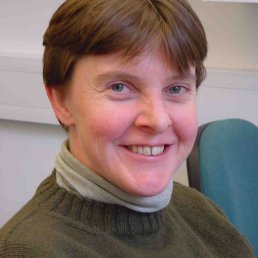
Professor Ben Green, Waynflete Professor of Pure Mathematics, Oxford
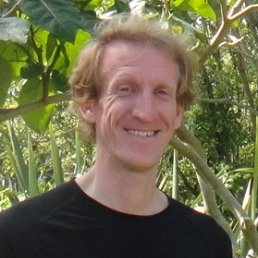
Dr Heather Harrington, Royal Society University Research Fellow in the Mathematical Institute, Oxford
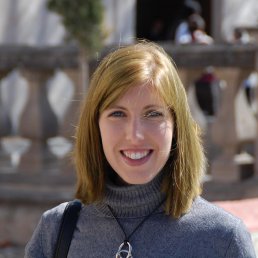
Professor Jon Keating, Henry Overton Wills Professor of Mathematics, Bristol and Chair of the Heilbronn Institute for Mathematical Research
[[{"fid":"23604","view_mode":"media_square","fields":{"format":"media_square","field_file_image_alt_text[und][0][value]":"Jon Keating","field_file_image_title_text[und][0][value]":"Jon Keating"},"type":"media","attributes":{"alt":"Jon Keating","title":"Jon Keating","height":"258","width":"258","class":"media-element file-media-square"}}]]
Dr Christopher Voyce, Head of Research Facilitation in the Mathematical Institute, Oxford
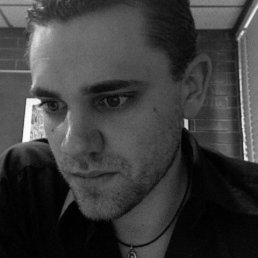
North meets South Colloquium
Abstract
Approximate prime numbers -- James Maynard

I will talk about the idea of an 'almost prime' number, and how this can be used to make progress on some famous problems about the primes themselves.
Mathematical biology: An early career retrospective -- Thomas Woolley
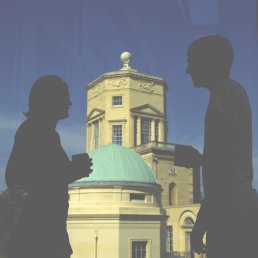
Since 2008 Thomas has focused his attention to the application of mathematical techniques to biological problems. Through numerous fruitful collaborations he has been extremely fortunate to work alongside some amazing researchers. But what has he done in the last 8 years? What lessons has he learnt? What knowledge has he produced?
This talk will encompass a brief overview of a range of applications, from animal skin patterns to cellular mechanics, via zombies and Godzilla.
Owning a successful DPhil
Abstract
Wondering about how to organise your DPhil? How to make the most of your supervision meetings? How to guarantee success in your studies? Look no further!
In this session we will explore the fundamentals of a successful DPhil with help from faculty members, postdocs and DPhil students.
In the first half of the session Andreas Münch, the Director of Graduate Studies, will give a brief overview of the stages of the DPhil programme in Oxford; after this Marc Lackenby will talk about his experience as a PhD student and supervisor.
The second part of the session will be a panel discussion, with panel members Lucy Hutchinson, Mark Penney, Michal Przykucki, and Thomas Woolley. Senior faculty members will be kindly asked to leave the lecture theatre to ensure that students feel comfortable about discussing their experiences with later year students and postdocs/research fellows.
At 5pm senior and junior faculty members, postdocs and students will reunite in the Common Room for Happy Hour.
About the speakers and panel members:
Andreas Münch received his PhD from the Technical University of Munich under the supervision of Karl-Heinz Hoffmann. He moved to Oxford in 2009, where he is an Associate Professor in Applied Mathematics. As the Director of Graduate Studies he deals with matters related to training and education of graduate students.
Marc Lackenby received his PhD from Cambridge under the supervision of W. B. Raymond Lickorish. He moved to Oxford in 1999, where he has been a Professor of Mathematics since 2006.
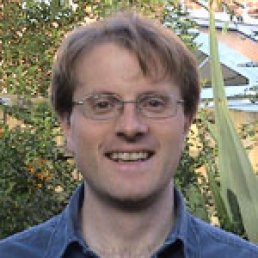
Lucy Hutchinson is a DPhil student in the Mathematical Biology group studying her final year.

Mark Penney is a fourth-year DPhil student in the Topology group.
Michal Przykucki received his PhD from Cambridge in 2013 under the supervision of Béla Bollobás; he is a member of the Combinatorics research group, and has been a Drapers Junior Research Fellow at St Anne's College since 2014.

Thomas Woolley received his DPhil from Oxford in 2012 under the supervision of Ruth Baker, Eamonn Gaffney, and Philip Maini. He is a member of the Mathematical Biology Group and has been a St John’s College Junior Research Fellow in Mathematics since 2013.


